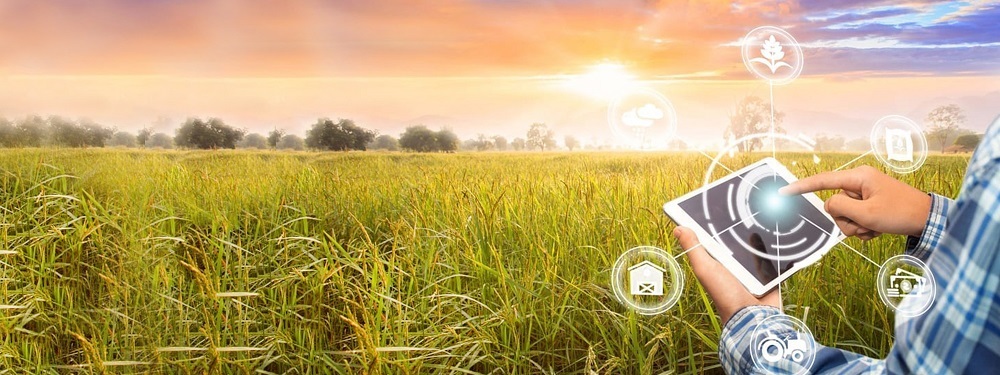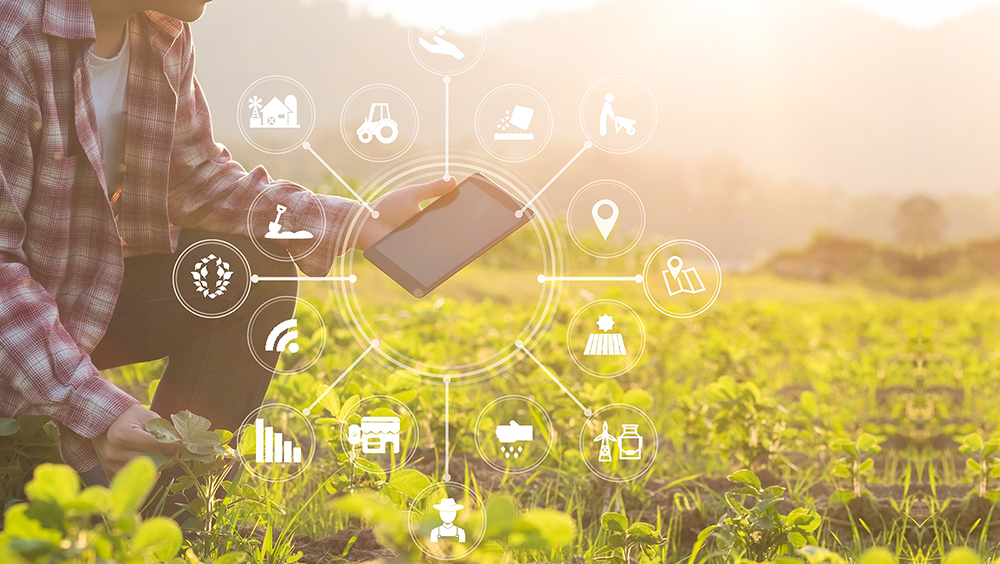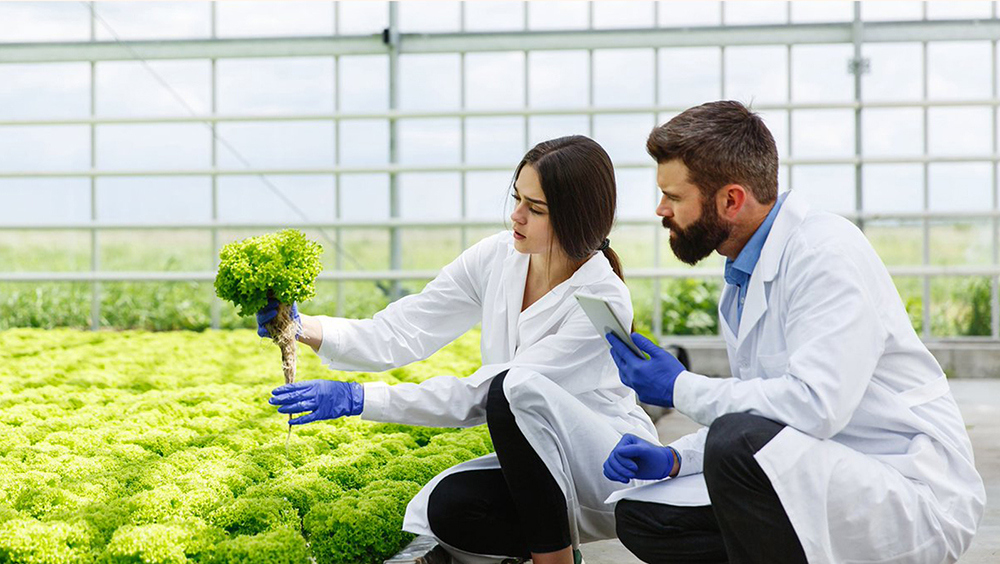India
Breadcrumb navigation
Technology driven Agriculture Revolution – Agriculture 4.0


Agriculture is one of the oldest professions known to mankind. It began over 10,000 years ago across several areas of the world. Early humans were foragers or hunters – hunting wild animals and gathering wild fruits and roots. As humans evolved, so did farming. Agriculture as we know it today, has evolved remarkably from the labor intensive stage of the 1920s to the mechanized farming stage of green revolution (until 2010), and finally the coming of age - Agriculture 4.0 which marked the adoption of digital technologies for increasing agricultural production and farm incomes.
The Agriculture sector is the largest livelihood provider globally. In India, despite contributing almost 15% to the GDP and employing over a quarter million people, the sector faces significant challenges, which hinders it from achieving its potential. The problems faced by the sector include:
- Farmers not getting the returns they deserve due to the presence of intermediaries
- Crops getting wasted due to insects and bug infestation
- Droughts affecting crop yield in one region while losing crops to flooding in another
- Small and fragmented farmlands losing more and more area to urbanization
- Migration to urban centers resulting in labor shortage at farms
Other factors such as climate change, population explosion and food security has forced the industry to seek innovative approaches that enhance production with lesser impact to the environment.

This is where “Agritech” or technology-driven agriculture comes into play. Agritech has unleashed a digital wave that has revolutionized the face of agriculture to deliver sustainable and profitable food production. The new era of agriculture - Agriculture 4.0 - is witnessing the augmentation of this manpower-driven system with Information and Communication technology (ICT) to achieve higher food production using fewer resources. Agriculture 4.0 marks the digitalization of food and agriculture systems using AI, IoT, automation and other technologies to create a hyper-connected network of farms, machines and factories that result in optimization of both food production and consumption.
Some of the key game changers of Agriculture 4.0 are:
Adoption of technology to enhance quality of produce
| Urban Farming | Adoption of aeroponic technology for indoor vertical farming |
| Genetic Farming | Adoption of Clustered Regularly Interspaced Short Palindromic Repeats (CRISPR) for genome editing to create enhanced breeds with higher yields and resilience in adverse conditions |
| 3D printing | Creating food objects using printers with hydrocolloids to replace base ingredient of food with other renewables like algae or grass |
Adoption of cross-industry horizontal solutions
| IoT | Using IoT for effective surveillance of farms with the help of sensors (light, humidity, temperature, soil moisture, health of equipment), automating irrigation systems, etc. |
| Drones | Utilizing drones for soil health scans, monitoring crop health, spraying fertilizers, forecasting crop yield and tracking weather conditions |
| Precision Farming | Big Data Analytics and Robotics-enabled approach that monitors farms and collects information like weather, yield, NDVI, crop moisture, terrain type, soil map from different sources to manage and optimize crop yield |
| Data Analytics | Making data driven decisions by analyzing data collected from IoT sensors at farms and the equipment used to deliver optimized smart farming |
 Nanotechnology Nanotechnology |
Application of novel nano tools like nanofertilizers, nanopesticides, nanobiosensors and nano-enabled remediation strategies for contaminated soils, focused on improving yields and food quality |
| Telematics | Machine to machine communication between hardware and sensors to automate decisions in farming. Application – precision-sowing that links seed spreader to soil sensors and leads to effective sowing as per soil conditions |
| Artificial Intelligence and Machine Learning | Application of autonomous robots to handle manual tasks, leveraging computer vision and deep learning algorithms for crop and soil monitoring, applying predictive analytics to track and predict environmental impact on crop yield |
| Big Data | Data mining large data sets generated by adoption of ICT in farming to provide actionable farming solutions that ensure profitability, efficiency and sustainability. Big data-enabled predictive modelling increasingly being used in crop insurance. |
| Blockchain | Enhancing agricultural supply chains by creating a shared, decentralized blockchain ledger of agricultural information that serves as a transparent and trusted source of truth. Empowers farmers and creates a direct link between farmers and consumers with traceability options |
In recent times, the government has undertaken diverse digital initiatives such as Agricultural Technology Management Agency (ATMA), National Mission for Sustainable Agriculture (NMSA), E-NAM, and Soil Health Management (SHM), etc. that focus on uplifting the agriculture sector. In addition to govt. initiatives, India is home to more than 450 Agritech start-ups, growing at a rate of 25% annually. The sector has received more than $248 million in funding which clearly indicates the exponential potential of this sector.

However, despite all of these efforts by the government, the startups and the technology companies to revolutionize the Indian landscape using new business models, the technology adoption has been slow. The primary deterrent to widespread adoption is the perceived cost of technology adoption and functional illiteracy of the marginal farmers. In addition, small fragmented landholdings, high opportunity cost to reach the farmers as well as distortionary subsidy practices by the government have decelerated the momentum of Agriculture 4.0 in India.
The key to addressing the problems in digital adoption by the agriculture sector lies in Public Private Partnership (PPP) that can create an enabling environment for technologies to reach the deepest rural pockets in India and empower farmers at the grass-root level. The PPP should aim at customizing challenges locally, encourage innovation and entrepreneurship, support institutions and policies that create an enabling ecosystem and promote inclusive growth of farmers by harnessing the potential of these technologies. The agriculture revolution in India can only be brought about by a successful public-private partnership, with the private sector bringing it forward and the public sector creating an enabling environment for it.
A farmer lies at the heart of the ecosystem that sustains a community. Empowering the farmer leads to empowering the community. The key to the Agriculture revolution lies in making the marginalized and neglected Indian farmer profitable, progressive and productive and there is no better time than now!
Darshana George
Senior Business Manager
NEC Technologies India
Contact